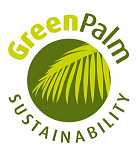The Curious Case of Palm Oil
Whenever I do not have screens to distract me, I get this compulsion to read everything that I can get my hands on. Whether it is me sitting on a toilet seat and reading information on soap bottles or on my breakfast table staring at the jar of chocolate spread; there is this one recurring ingredient that has the word ‘palm oil’ in it. As an engineer, I could not drop the correlation without understanding what it means. Turns out, about half the products we consume contain ‘palm oil’ as an ingredient.
Palm oil can be found in products ranging from cooking oil, margarine, ice cream, confectionary and ready-to-eat meals, as a base for liquid detergents, soaps, shampoos, lipstick, waxes and polishes, as an industry lubricant and biofuel. Fruits of palm trees are picked up and sent to processing plants where the oil is then extracted from these fruits. On researching a little more I found out that the versatility of this ingredient comes with its consequences.

The biggest consequence is its impact on our environment. We consume an average of 7.7 kilograms of palm oil in a year. This massive production of palm oil comes from the use of 20,000,000 hectares of plantation land which is 5 times the size of Switzerland. The countries of Indonesia and Malaysia provide around 85% of the world’s palm oil. These plantations are laid down at the expense of rainforests, wildlife and peatlands in the area. 55-60% of palm oil plantations were on ‘virgin forests’ to obtain timber for increased profits. ‘Virgin forests’ refer to forests that have been around for centuries and have never been exploited for human consumption.
Destroying these forests contributes to climate change in two ways – the clearing and burning of the forest releases CO2 and the CO2 that is naturally absorbed by the forest is stopped. Indonesia, as a consequence, has become the third largest emitter of carbon dioxide in the world after China and USA, largely due to intentional forest fires to clear up the rain-forests. The forest biodiversity is also affected. Rare and endangered species have been killed, the likes of which include orangutans, tigers, elephants and rhinos. Another direct consequence includes effluent pollution from the processing plants where 2.5 metric tonnes of waste is formed in the process to create palm oil.
So why does this matter to me while I am chilling on my porch looking at the sunset with a cup of coffee in one hand and a bag of chips in the other? Well, the answer is not too far away. As with almost every packaged food nowadays, that bag of chips was made using crazy amounts of palm oil. As an immediate environmental consequence, the smog from the fires burning down the rainforests have reached cities in Malaysia and Singapore and won’t be long before it reaches you. The long term consequences are more far-reaching. Deforestation of Southeast Asian forests changes rainfall patterns leading to more severe and frequent droughts and floods in Asia and the rest of the world.
On and around palm oil plantations, there have also been reports of human rights violations. The workers, primarily women, are underpaid and overworked as they are compelled to meet the unimaginably high-volume thresholds set by the processors on a daily basis. In addition, there is rampant child labor to help take the burden off the workers.
The environmentalist in me is cringing at the implications of using products with palm oil. However, just searching for alternative oil sources is not a convenient idea either. Palm oil has become the necessary evil of the consumer goods industry. It is the most economically viable as it has a high yield rate and low production cost in comparison to other vegetable oils. Resorting to using other oils calls for cultivating more land area to obtain the same quantity of palm oil.
What can I do from here?
At the moment, there are no other scalable alternatives available that are as economical as palm oil. The better way forward is to ensure that the product you buy sources palm oil in a sustainable way. Sourcing palm oil sustainably means that virgin forests are not cleared to make way for new plantations, wildlife (especially endangered species) should be protected on plantations and areas around it and effluent pollution, as a result of processing mills, should be reduced.
Companies like Unilever, P&G and Nestle have started major initiatives to combat unethical sourcing in their supply chain. Making sure that we buy from organizations that have a transparent supply chain and have declared policies on combating these environmental consequences is the first step.


Searching online for company information every time you come across a product with palm oil is a big pain. Another way to find sustainably sourced materials is to look for the RSPO label or the Green Palm Sustainability label. Roundtable for Sustainable Palm Oil (RSPO) has around 3.2 million hectares of land certified for sustainable sourcing adhering to all the rules that calls for sustainable sourcing. Green Palm sustainability label is another part of RSPO that allows organizations to support or use certified palm oil.
Another way, if you do want to avoid the hassle of finding ‘sustainable sources’ is by buying ‘locally produced’ items that are regionally grown and sourced, such as cold pressed bar soaps sold at local markets, or ‘homemade’ peanut butter spread made organically where alternative vegetable oils like coconut oil may be used.
We, at earth&us, are working to make such information available to consumers in an easier and simple manner that can allows them to make more informed decisions at the point of purchasing. The initiative is called, Impactwala.
Written by Aromi Salot
Edited by Mohit Arora



